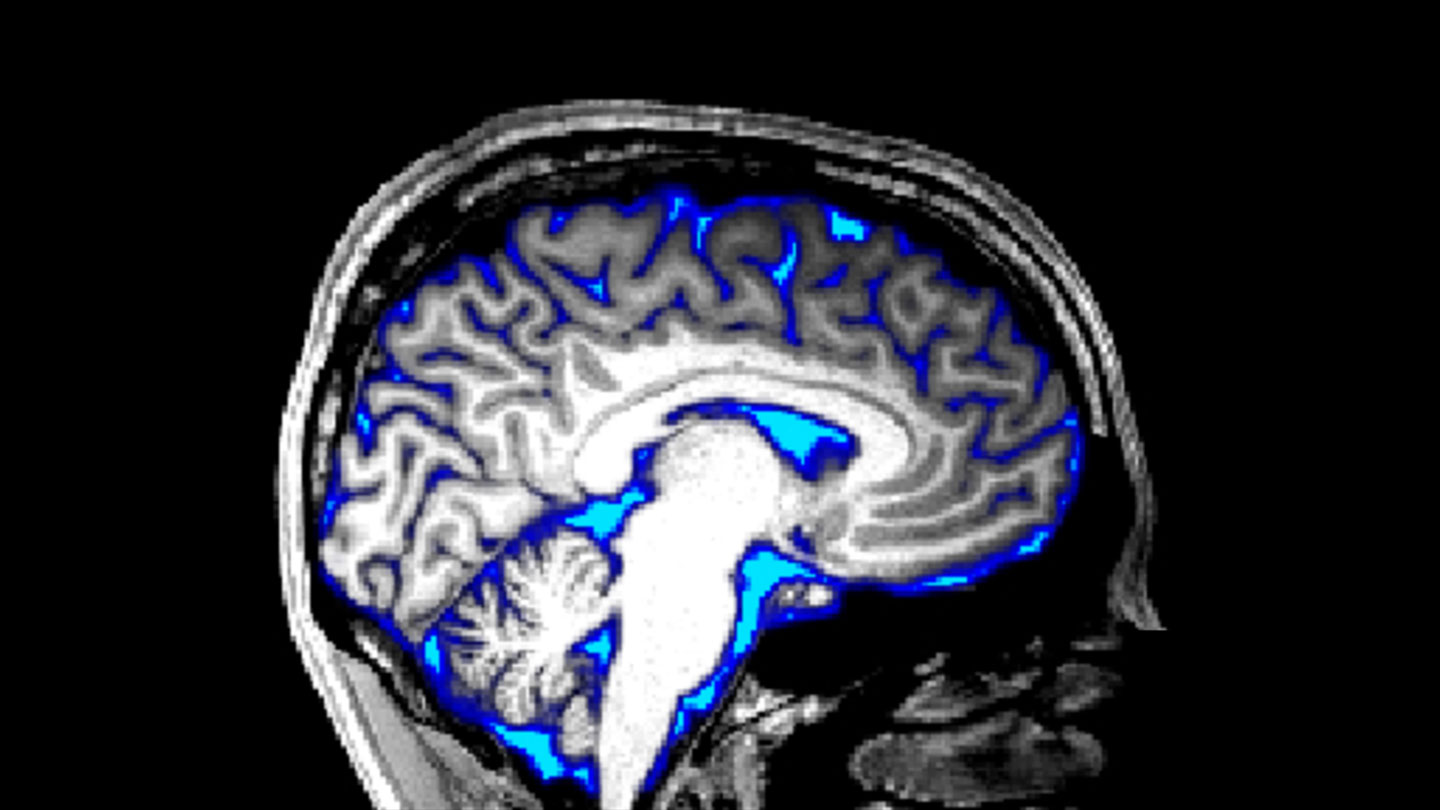
Waves of cerebrospinal fluid which normally wash over brains during sleep can be made to pulse in the brains of people who are wide awake, a new study finds.
The clear fluid may flush out harmful waste, such as the sticky proteins that accumulate in Alzheimer’s disease (SN: 7/15/18). So being able to control the fluid’s flow in the brain could possibly one day have implications for treating certain brain disorders.
“I think this [finding] will help with many neurological disorders,” says Jonathan Kipnis, a neuroscientist at Washington University in St. Louis who was not involved in the study. “Think of Formula One. You can have the best car and driver, but without a great maintenance crew, that driver will not win the race.” Spinal fluid flow in the brain is a major part of that maintenance crew, he says. But he and other researchers, including the study’s authors, caution that any potential therapeutic applications are still far off.
In 2019, neuroscientist Laura Lewis of Boston University and colleagues reported that strong waves of cerebrospinal fluid wash through our brains while we slumber, suggesting that one unappreciated role of sleep may be to give the brain a deep clean (SN: 10/31/19). And the team showed that the slow neural oscillations that characterize deep, non-REM sleep occur in lockstep with the waves of spinal fluid through the brain.
“If you drop your clothes in a bath of water, eventually dirt will come out. But if you swish them back and forth, things are moving much more effectively,” Lewis says. “That’s the analogy I think of.”
These flows were far larger than the small, rhythmic influences that one’s breathing and heartbeat have on spinal fluid.
The researchers think that as brain activity during sleep causes blood to flow through the brain — bringing oxygen to power-hungry cells — the spinal fluid flows in behind the blood to maintain constant pressure inside the skull.
In the new study, “the first question we wanted to answer is, can you manipulate [blood flow] enough to also drive [fluid] flow when someone’s awake?” says Stephanie Williams, a neuroscientist also at Boston University.
To stimulate blood flow in the brain, Williams, Lewis and their colleagues showed a flickering checkerboard pattern to six healthy adults. A mix of eavesdropping techniques, including fMRI and electrodes, confirmed that this intense visual stimulation affected brain blood flow and allowed the team to see the order of events.
Subscribe to Science News
Get great science journalism, from the most trusted source, delivered to your doorstep.
Neural activity increased when the flashing pattern was turned on, followed by increased blood flow. Cerebrospinal fluid flow was suppressed while blood flow increased, and then surged into the brain as blood flow ebbed when the stimulation stopped, the team reports March 30 in PLOS Biology. Longer stimulation produced larger spinal fluid flows, suggesting it was possible to maximize the response.
The effect of brain activity on the spinal fluid flow is separate from the influences of heartbeat and breathing, the researchers found. “There’s a really interesting biological insight that comes out of this,” Lewis says, “which is that the brain has a way to control its own fluid flow.”
Whether any waste was cleared from the awake brain was not measured. Previous studies in mice have found that certain audio-visual stimuli reduce levels of the toxic proteins linked to Alzheimer’s and Parkinson’s. Clinical trials are testing if the technique works in humans.
“It’s beautiful study, but I wouldn’t draw therapeutic conclusions from this,” says Steven Goldman, a neurologist at the University of Rochester Medical Center in New York who was not involved in the work. The brain’s fluid flow system, he says, is optimally set up for cleaning during sleep. “It would be more effective to just ensure a good night’s sleep,” he says. “Any manipulations over and above that would be best employed during sleep.”
The researchers acknowledge that the spinal fluid flows they induced were not as large as those seen during sleep. “We didn’t manage to re-create sleep itself, but it was really a pretty substantial change in the flow,” Lewis says.
The team is planning to study the connections between spinal fluid flow in the brain and diseases like Alzheimer’s, she says. “In disorders where fluid flow is implicated, as seems to be the case with Alzheimer’s, this [technique] would hopefully give us a handle on understanding where does that come from, what’s the process that’s disrupted?”
"flow" - Google News
March 31, 2023 at 01:00AM
https://ift.tt/7bZHy2f
Scientists triggered the flow of spinal fluid in the awake brain - Science News Magazine
"flow" - Google News
https://ift.tt/taJSiwQ
https://ift.tt/W9ZF7KR
Bagikan Berita Ini














0 Response to "Scientists triggered the flow of spinal fluid in the awake brain - Science News Magazine"
Post a Comment